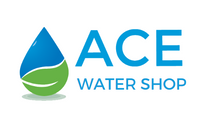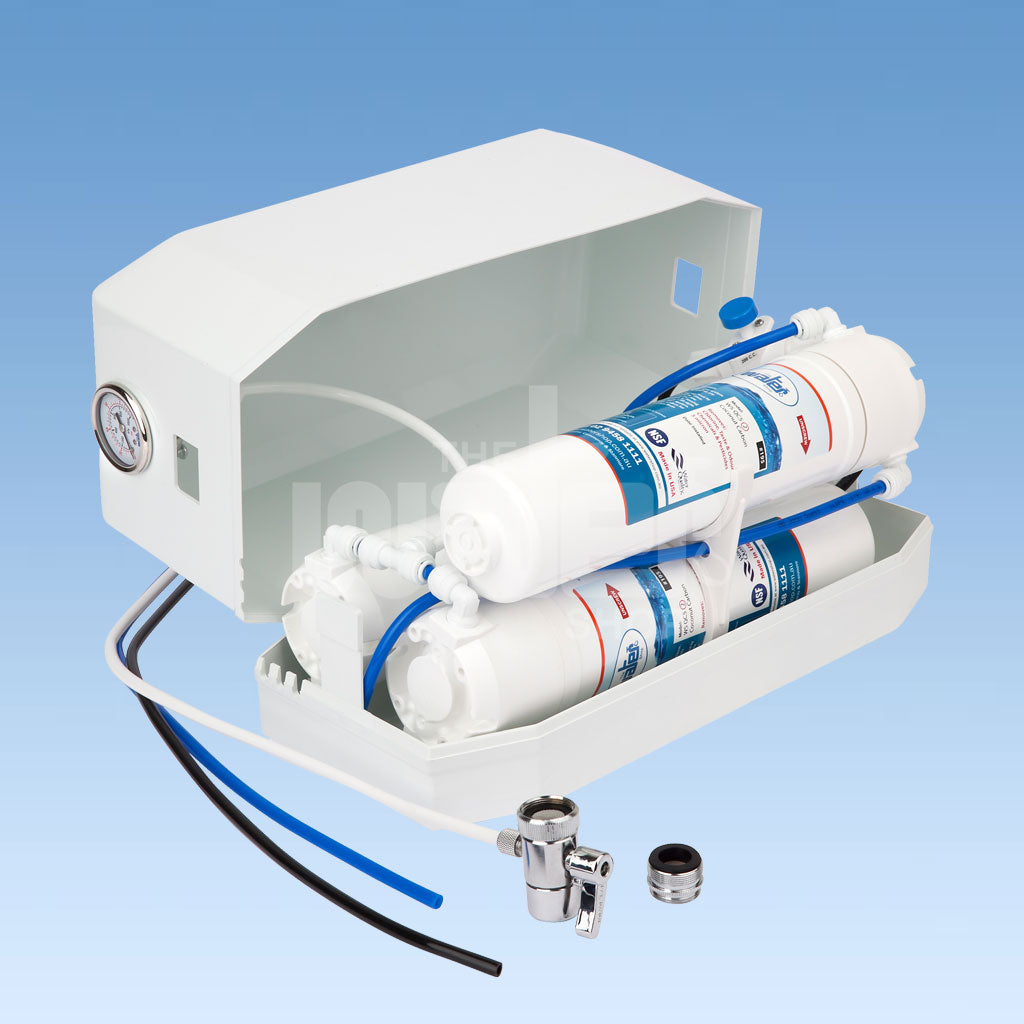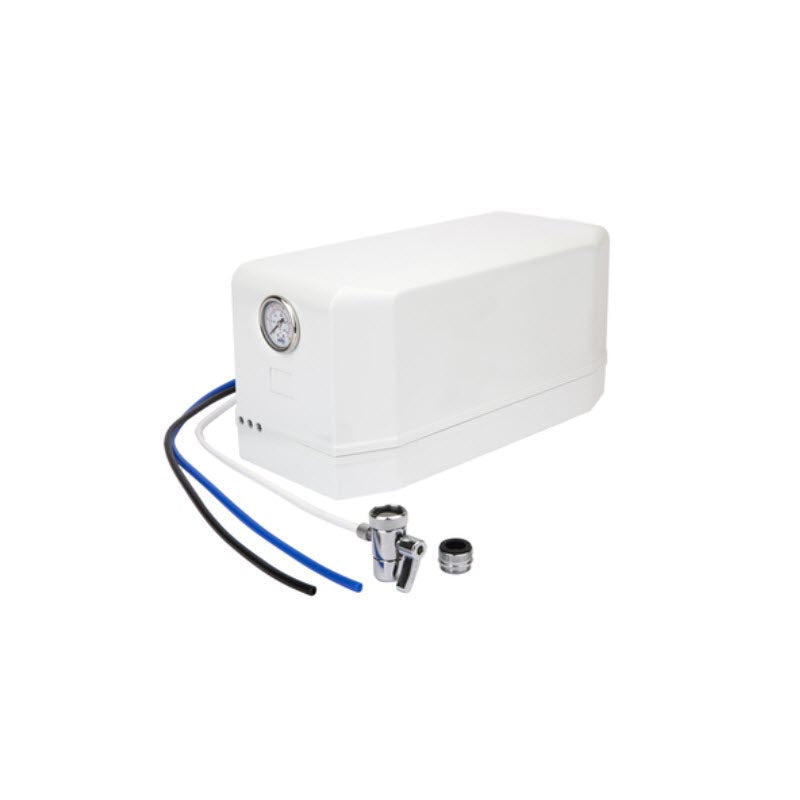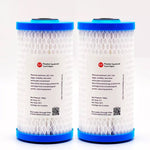You have no items in your shopping cart.
Multi-Stage Filtration System: Reverse Osmosis is a membrane-based filtration method that eliminates many big molecules and ions from solutions by putting pressure on the key on one side of a selective membrane. As a result, the solute traps the pressured side of the membrane. At the same time, the pure solvent can pass through.
Improved reverse osmosis (RO) systems have at least a first and second stage. At least one RO membrane, a permeate stream outlet, a feed stream inlet, and a concentrate stream outlet. The second stage's feed stream intake connects to the first stage's concentrate stream outflow. Then, the second pressure is greater than the first pressure, and pressure exclusion occurs.
HOW IT WORKS: Multi-Stage Filtration System Reverse Osmosis
Reverse osmosis helps boost pressure on the system's salt side and forces water through the semipermeable RO membrane. It leaves almost all of the melted salts in the rejected stream. The feed water's salt concentration determines the amount of pressure required. The higher the feed water concentration, the more pressure it needs to overcome the osmotic pressure.
Permeate (or product) water is desalinated water that went through demineralization or deionization. The reject (or concentrate) stream is the water stream that carries the concentrated pollutants that do not pass through the RO membrane.
As the feedwater enters the system's membrane under pressure, the water particles move through the semipermeable membrane. It gives enough force to overcome osmotic pressure. But the salts and other contaminants are not allowed to pass. They're discharged through the reject stream (also known as the concentrate or brine stream). You can drain it back into the feedwater system to be reused through the RO system in specific instances to save water. The water that goes through the system's membrane is known as permeate or product water. It's normally devoid of dissolved salts to the tune of 95 percent to 99 percent.
It's crucial to understand that a RO system uses cross filtration rather than traditional filtration, which collects pollutants within the filter material. The solution flows through or crosses the filter with two exits in cross filtration: the purified water goes one way, and the polluted water goes the other. Crossflow filtration removes pollutants by allowing water to whisk them away while also providing enough turbulence to clean the membrane surface.
WHAT IT REMOVES FROM THE WATER
Reverse osmosis can remove 99 percent or more of dissolved salts (ions), particles, colloids, organics, microorganisms, and pyrogens from the feed water (although you should not rely on an RO system to filter 100 percent of bacteria and viruses). The RO membrane rejects contaminants based on their size and charge. A properly operating RO system will generally reject any contamination with a molecular weight greater than 200.
Similarly, the higher the contaminant's ionic charge, the less likely it will flow through the RO membrane. A sodium ion, for example, only has one charge (monovalent). The RO membrane does not deny it the same way as calcium, which has two heads. Similarly, because CO2 is not substantially ionized (charged) while in solution and has a very low molecular weight, a RO system does not effectively remove it. Because a RO system does not eliminate gases, the pH of the permeate water may be slightly lower than normal, depending on the amount of CO2 in the feed water that is transformed to carbonic acid.
For both big and small flows, reverse osmosis is particularly effective in treating brackish, surface, and groundwater. Pharmaceutical, food and beverage, boiler feed water, metal finishing, and semiconductor production are just a few industries that use RO water.
MULTI-STAGE FILTRATION SYSTEM: REVERSE OSMOSIS
If you're serious about removing hazardous contaminants from your drinking water, you'll want to learn about the multi-stage reverse osmosis purification process. Many people swear by it because it's one of the most thorough ways to filter water in the home.
One-Stage
The feedwater enters the RO system as a single stream and exits as it concentrates or permeates water in a one-stage RO system.
Two-Stage
The concentrate from the 1st stage provides the feed water for the second stage in a two-stage system. The permeate water collected in the first step blends with the permeate water obtained in the second stage. Additional steps improve the system's recovery.
Three-Stage
Because there are so many Reverse Osmosis water filters on the market, it's difficult for consumers to find out which one is ideal for their needs. Here's a quick rundown of how reverse osmosis systems work. The membrane is at the heart of every reverse osmosis unit. It typically consist of a thin-film composite (TFC), semipermeable material degradable by chlorine. Therefore, it must remove chlorine from the water using a carbon filter. As we all know, a sediment pre-filter cartridge filter is also best to protect the carbon filter.
- STAGE 1 - Sediment Filter filters sediment and other particle matter such as dirt, silt, and rust that can impact the flavor and look of your water. It also protects the Carbon filter.
- STAGE 2 - Activated carbon filter to filter the chlorine and chloramines from the water and condition it before the reverse osmosis membrane. It also preserves the RO membrane.
- STAGE 3 - Reverse Osmosis Membrane removes organic and inorganic compounds like fluoride from water. It reduces pollutants called Total Dissolved Solids (TDS) to 1/10,000 (0.0001) of a micron. It also lowers arsenic, lead, parasite cysts, copper, and other contaminants.
Four-Stage
When we add a DI filter to a 3-stage reverse osmosis unit, it becomes a 4-stage reverse osmosis/deionization unit. Here are the usual four steps listed below:
- STAGE 1 - Sediment Filter filters sediment and other particle matter such as dirt, silt, and rust that can impact the flavor and look of your water. It also protects the Carbon filter.
- STAGE 2 - Activated carbon filter to filter the chlorine and chloramines from the water and condition it before the reverse osmosis membrane. It also preserves the RO membrane.
- STAGE 3 - Reverse Osmosis Membrane removes organic and inorganic compounds like fluoride from water. It reduces pollutants called Total Dissolved Solids (TDS) to 1/10,000 (0.0001) of a micron. It also lowers arsenic, lead, parasite cysts, copper, and other contaminants.
- STAGE 4 – Deionization using Color Changing Resin Filter the membrane filtered water to remove any leftover total dissolved solids (TDS). There is normally a small quantity of TDS remaining in the water after filtering the membrane. It's critical to remove any remaining TDS from aquarium water before using it. It happens by passing the water through a resin charged with Cation and Anion resins (H+ and OH-), respectively. As the resin absorbs TDS, its color will change from blue to amber as it becomes depleted. When the resin has become a different hue, it's better to upgrade the DI filter. It serves as a visual reminder that it's time to change the media.
Multi-Stage Filtration System: Reverse Osmosis Pre-Treatment
Pre-treatment of a RO system using mechanical and chemical treatments is essential to avoid costly premature RO membrane failure, fouling, scaling, and frequent cleaning needs. The following is a list of common issues that a RO system faces due to improper pre-treatment.
Fouling
Many pollutants in city feed water are invisible to the naked eye and safe to drink, but they are large enough to foul (or block) a RO system quickly. When pollutants build up on the membrane's surface, the membrane becomes fouled. Fouling happens in the front end of a RO system, resulting in a higher pressure drop and reduced permeate flow. It translates to higher running expenses and the need to clean or replace RO membranes in the long run. Fouling will occur eventually, regardless of how efficient your pre-treatment and cleaning program are, due to the incredibly fine pore size of a RO membrane. However, by implementing correct pre-treatment, you can reduce the frequency of dealing with fouling issues.
Scaling
Scaling can occur as some dissolved (inorganic) compounds grow increasingly concentrated (remember the concentration factor discussion). These compounds surpass their solubility limitations and precipitate as scale on the membrane surface. Scaling causes a larger pressure drop throughout the system and high salt passage (reduced salt rejection), low permeate flow, and poor permeate water quality. Calcium carbonate is an example of a frequent scale that forms on a RO membrane (CaCO3).
Mechanical Damage
We should include pre and post RO system plumbing and controls in the pre-treatment plan. Mechanical damage to the membranes can happen if 'hard starts' occur. Mechanical damage to the RO membranes might also happen when too much back pressure on the system. We can address these issues by employing variable frequency drive motors to start high-pressure pumps for RO systems and installing check valves. Pressure release valves to avoid excessive back pressure on the RO unit from damaging the membrane permanently.
Chemical Attack
Modern thin-film composite membranes do not tolerate chlorine and chloramines. Chlorine and other oxidizers can 'burn' holes in membrane pores, causing irreversible damage. A higher penetration flow and a higher salt alley result from a chemical attack on a RO membrane (poorer quality permeate water). This is why, because there is no biocide to limit microbial growth on RO membranes, they foul up so quickly.
Multi-Stage Filtration System: Reverse Osmosis MEMBRANE CLEANING TIPS
RO membranes will need to be cleaned regularly. Anywhere from once a year to four times a year, depending on the feed water quality. Generally, it's time to clean the RO membranes if the normalized pressure decrease or normalized salt passage has grown by 15%. It's also time to clean the RO membranes if the average permeate flow has dropped by 15%. You have the option of cleaning the RO membranes onsite or having them removed from the RO system and cleaned offsite by a service business that specializes in this service. Offsite membrane cleaning is more effective than onsite cleaning skids in giving a superior clean.
Cleaning the RO membrane with low and high pH cleansers removes impurities from the membrane. Organics, colloidal, and biofouling are treated with a high pH cleaner, whereas scaling is dealt with low pH cleaners. Cleaning RO membranes entails more than just applying the right chemicals. Many additional parameters, like flows, the temperature of the water and quality, appropriately constructed and sized cleaning skids, and many others, must be addressed by an expert service team to clean RO membranes properly.
FINAL THOUGHTS: Multi Stage Filtration System: Reverse Osmosis
The multi-stage filtration system of Reverse osmosis is a tried-and-true method of producing water suited for a wide range of industrial applications that need deionized or demineralized water. After the RO system, further post-treatments such as mixed bed deionization can improve the RO permeates quality and make it appropriate for most applications that require high. An RO system's pre-treatment and monitoring are critical for avoiding expensive repairs and maintenance. Your RO system should deliver many years of high purity water with the right system design, maintenance program, and expert service assistance.
Ace Water Coolers offers 3-Stage and 4-Stage reverse osmosis systems in Australia! Don't hesitate to get in touch with us today so we can help you out.












